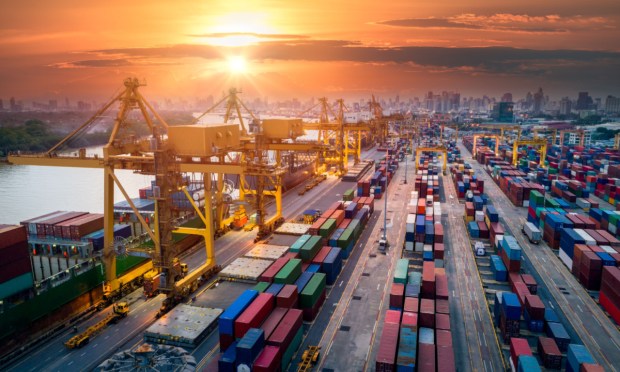Toward 2030: How Ecosystem Offerings Will Transform Trade Finance’s Future

Across the typically staid area of trade finance, despite the importance of trade finance products and services to global trade growth and economic development, decades of paper-based processes, regulatory mismatches and monolithic financial infrastructures have historically stymied innovation.
But we are almost at the second half of the 2020s, and as the decade nears its finish line, a foundational shift is coming to the trade finance sector.
That’s because trade finance is evolving from simple, often singular, financial instruments to ecosystem-based offerings that cater to the complete customer journey and include trade loans, discounting loans and supply chain finance, as well as services like letters of credit, performance guarantees and documentary collections.
This slow but mighty change, in concert with shifts in the broader macro environment, is inspiring banks and traditional financial institutions to innovate their offerings via the use of digitization, automation and the integration of emerging technologies that can enable faster decision-making, particularly around risk assessment and underwriting processes, and make global trade more efficient and transparent.
Still, as digital trade finance technologies and globalization help drive innovation and unlock liquidity across the supply chain, it is important to ensure that the millions of smaller businesses that help fuel the global economy aren’t shut out from crucial access to financing.
Read more: Payment Innovations Tackle Trade Finance Gap as Banks Pull Back
Financial Providers Bulk up Their Digital Trade Finance Toolkits
Several key trends are emerging as we look ahead to the second half of the decade, pointing toward a future in the 2030s marked by increased efficiency, transparency and security in trade finance, collectively promising to reshape the way businesses engage in cross-border transactions.
One key trend is the emergence of digital trade platforms as centralized hubs that connect various stakeholders in the trade ecosystem. These platforms facilitate end-to-end digitization of trade documents, communication and financing.
Debopama Sen, head of payments, Citi Services, told PYMNTS this month (Jan. 12) that as more commerce moves online, companies that have historically been linked to what might be thought of as “traditional” supply chains are now, “increasingly dealing directly, and digitally … with a whole different set of counterparties,” demanding that trade financing is firmly woven into the technological infrastructure linking buyers and suppliers.
“The payment solutions that [banks] are offering to their customers need to be completely and seamlessly embedded within the commercial transactions they’re doing for their clients,” Sen added, noting that otherwise they risk losing business to digital upstarts.
PYMNTS Intelligence has found that embedded finance can help move B2B transactions beyond the confines of paper, and innovations in trade finance and working capital are helping firms move confidently into the realities of today’s shifting operating environment.
As the decade advances, the integration of artificial intelligence (AI) and machine learning (ML) into digital trade platforms will enhance decision-making processes, providing valuable insights into market trends and optimizing supply chain financing.
See also: Digitization Speeds Approvals, Closes Gaps in EU Trade Finance Sector
A Paradigm Shift in Risk Assessment
In the past, trade finance was bogged down by lengthy risk assessment and underwriting processes, and accessing credit could take days or weeks, especially if it was a business’s first time — but as PYMNTS previously reported, a number of companies are increasingly focused on ways to tackle the trade finance gap as lenders tighten their standards.
Trade credit insurance, a staple in risk management, is already embracing AI for more accurate risk assessment. As the space moves forward, AI-driven algorithms will become increasingly sophisticated in evaluating credit risks, providing real-time insights into the financial health of trading partners. This evolution promises to refine the pricing of trade credit insurance and elevate risk management practices — while at the same time democratizing access to the financing critical for global growth for smaller firms.
Supply chain finance is also undergoing a transformation into a more interconnected and automated system. AI and Internet of Things (IoT) technologies are enabling real-time tracking of goods, triggering automatic financing events and improving the efficiency of supply chain financing. The second half of the 2020s holds the promise of a more streamlined and responsive supply chain finance landscape.
Navigating the complex landscape of international trade regulations is one of the sector’s most entrenched and ongoing legacy challenges — and one that this decade’s innovations are hoping to solve for.
Regulatory technology (RegTech) is already helping automate and streamline compliance checks, and the future could see a broad integration of advanced analytics and AI in RegTech, enabling more efficient compliance management with automated monitoring of changing regulations.
The journey into the future of trade finance has begun, and businesses and financial institutions that strategically adopt and adapt to these changes stand to gain a competitive edge.

